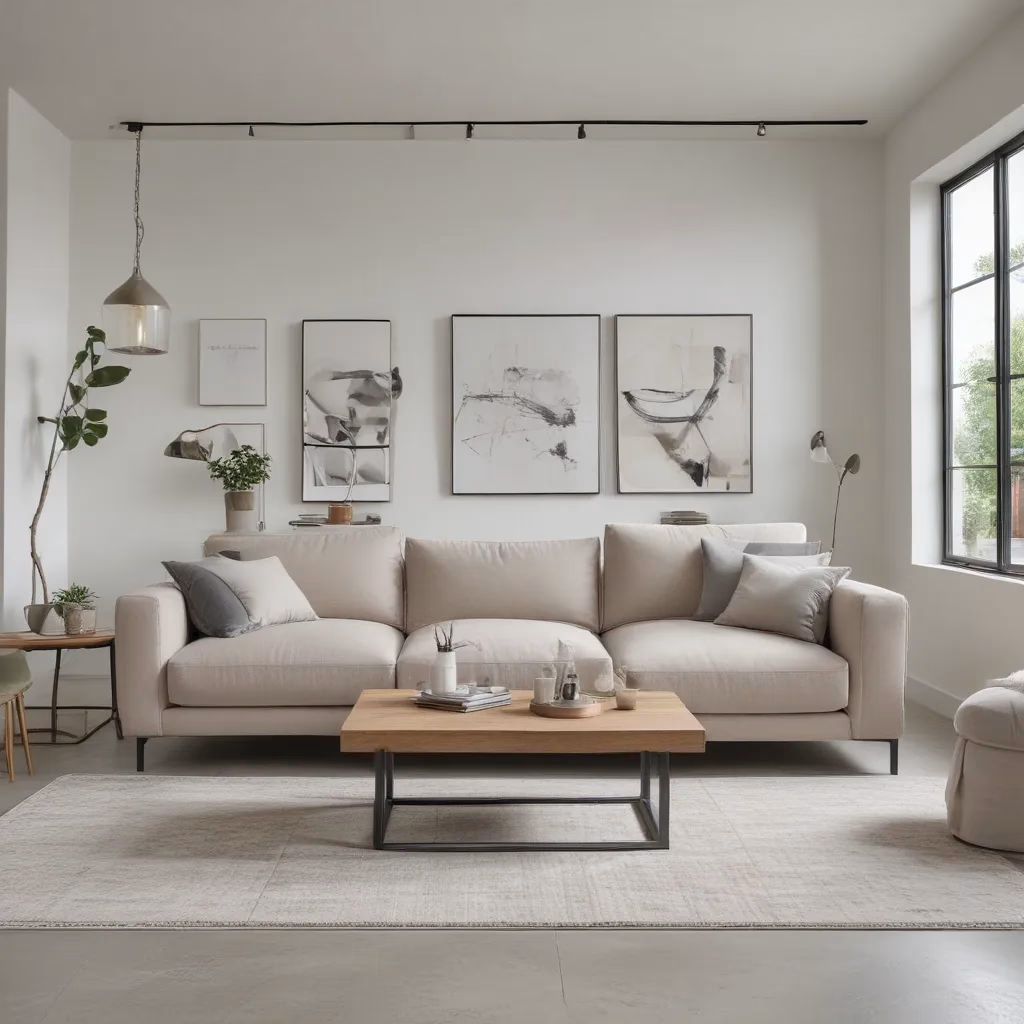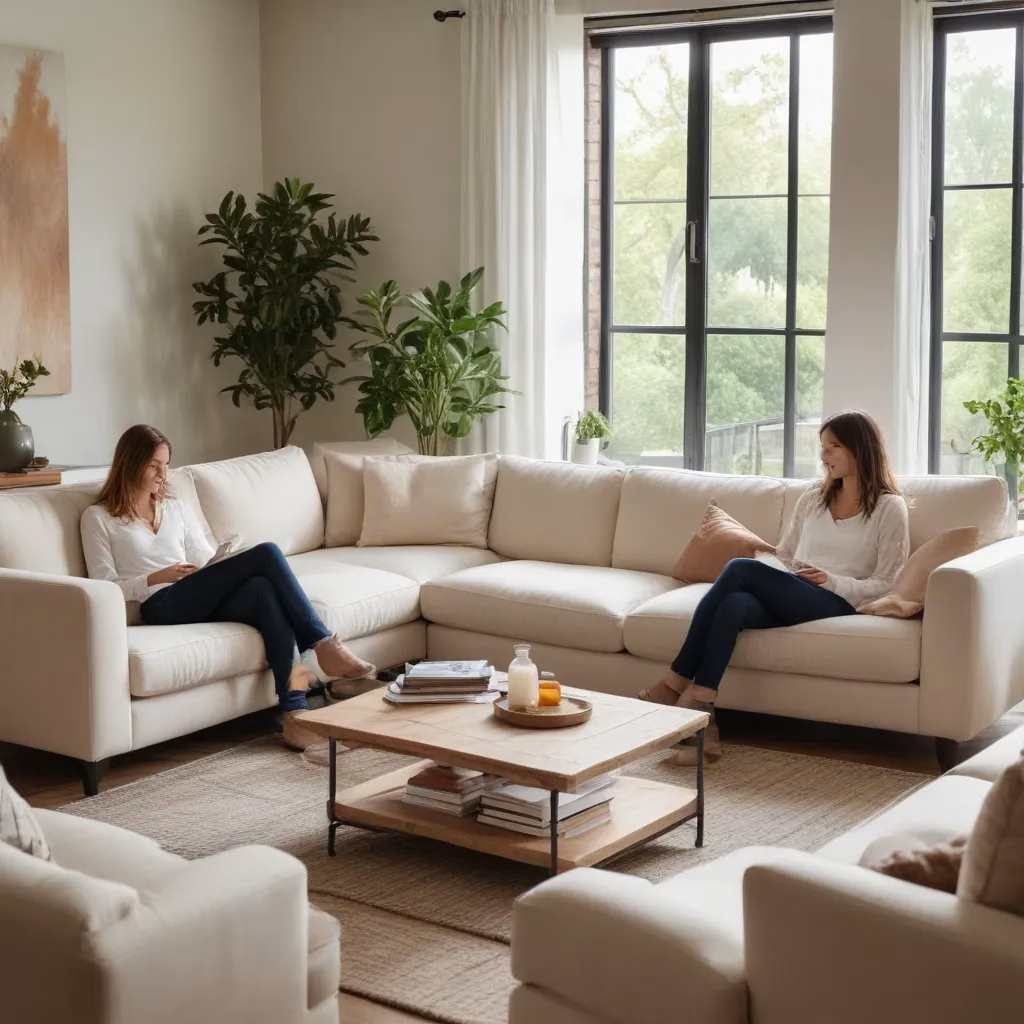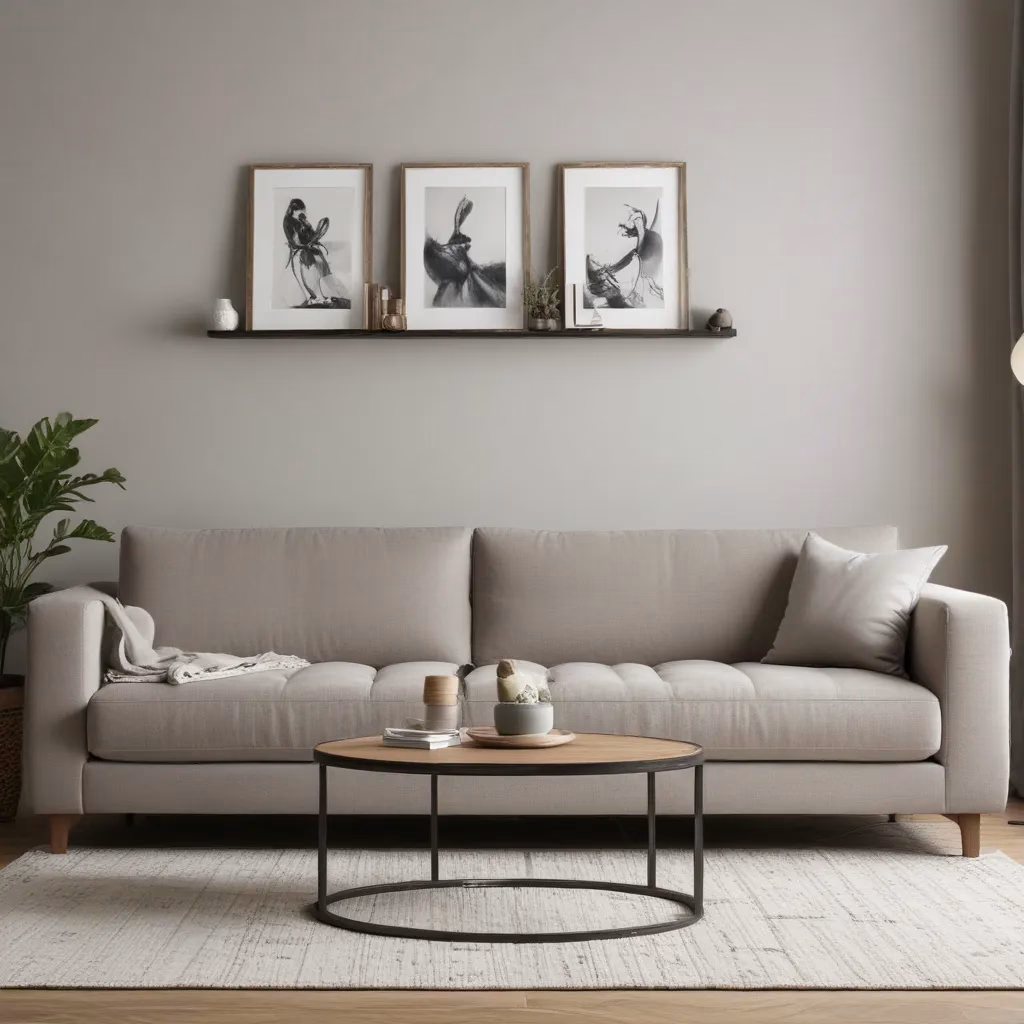
The rise of open-concept living has transformed the way we design and utilize our homes. By removing walls and creating expansive, multi-functional spaces, this contemporary approach to interior design fosters a sense of openness, connectivity, and versatility. However, when it comes to furnishing these open layouts, finding the right sofas and arranging them effectively can pose unique challenges.
As an experienced furniture consultant and interior design writer for SofaSpectacular.co.uk, I’m here to share my expertise on selecting the perfect sofas for open-concept living spaces and mastering the art of zoning within these seamless, free-flowing environments.
Fabric and Upholstery Selection
The choice of upholstery fabric is paramount when outfitting an open-concept layout. These spaces demand durable, stain-resistant materials that can withstand the rigors of high-traffic areas and occasional spills. Look for performance fabrics like microfiber, polyester, or outdoor-rated upholstery that combine style and practicality.
Beyond just durability, consider the textural qualities of the fabric as well. Softer, more relaxed textures like chenille or velvet can help create a cozy, inviting atmosphere, while structured or tightly woven fabrics like linen or cotton evoke a more modern, refined aesthetic. The right upholstery can make a significant impact on the overall ambiance of your open-concept living space.
Living Room Layout Tips
Arranging furniture in an open-concept layout requires a strategic approach to define distinct zones without compromising the sense of openness. Begin by identifying the primary functions of your living space – whether it’s a combined living room, dining area, and home office, or a more streamlined setup with just a living and dining area.
Start by positioning your sofa as the anchor piece. Rather than placing it in the center of the room, consider floating it in the space or arranging it to face a focal point, such as a fireplace or entertainment system. This arrangement helps create a clear conversation zone while allowing for easy circulation around the room.
Supplement your sofa with complementary accent chairs, ottomans, and side tables to further define the living area. Strategically placed area rugs can also help delineate different zones, visually separating the living space from the dining or work areas.
Remember to leave ample negative space around your furniture arrangements to maintain a sense of flow and prevent the room from feeling overcrowded. Smooth traffic patterns are essential in open-concept layouts, so be mindful of how people will move through the space.
Sofa Cleaning & Maintenance
Maintaining the pristine condition of your sofa is crucial in an open-concept setting, where it serves as a central focal point. Establish a regular upholstery care routine to extend the lifespan of your investment.
Begin by spot cleaning any spills or stains as soon as they occur, using a mild detergent and a soft, damp cloth. Avoid rubbing the fabric, as this can further set the stain. For deeper cleaning, consult the manufacturer’s recommendations or seek the expertise of a professional upholstery cleaning service.
Over time, consider professionally deep-cleaning your sofa to remove any built-up dirt, oils, or odors. This not only preserves the appearance of your furniture but also helps maintain a healthy, fresh-smelling environment within your open-concept living space.
Styling for Comfort & Aesthetics
While functionality is a primary concern in an open-concept layout, don’t neglect the importance of creating a visually harmonious and inviting atmosphere. Coordinate your sofa with complementary accent pillows, throws, and area rugs to enhance the overall aesthetic.
Layering different textures and patterns can add depth and visual interest to the space. For example, pairing a velvet sofa with linen throw pillows and a chunky knit blanket can create a cozy, layered look that feels both stylish and comfortable.
Remember to balance form and function when selecting your sofa and complementary décor. Choose pieces that not only serve your practical needs but also contribute to the overall design vision for your open-concept living area.
Sofa Buying Considerations
When shopping for a sofa to fit your open-concept layout, pay close attention to the dimensions of both the piece and the space. Measure the available floor area meticulously to double-check that your new sofa will fit seamlessly without compromising circulation or crowding the room.
Look for construction quality indicators, such as sturdy hardwood frames, high-density foam cushions, and reinforced joints, to double-check that your investment will withstand the demands of an active, open-concept environment.
Many furniture retailers, including SofaSpectacular.co.uk, offer customization options that allow you to tailor the sofa to your specific needs. Consider features like modular configurations, convertible chaise lounges, or built-in storage to maximize the functionality and versatility of your open-concept living space.
Living Room Décor Trends
As open-concept layouts continue to rise in popularity, designers are embracing innovative ways to integrate sofas with their surrounding environments. Neutral color palettes and clean-lined silhouettes are gaining momentum, allowing the sofa to serve as a versatile canvas for layering textiles, artwork, and personal touches.
Incorporating natural materials like wood, stone, and woven elements can help forge a seamless connection between the sofa and the overall décor scheme. Complementary accent furniture, such as mid-century modern or industrial-inspired pieces, can further enhance the cohesive aesthetic of your open-concept living space.
Versatile Sofa Designs
The flexibility inherent in open-concept layouts calls for equally adaptable sofa solutions. Modular sectional sofas have become a popular choice, allowing you to configure the seating to suit your changing needs and the evolving layout of the room.
For multifunctional living, consider convertible sofa designs that offer hidden storage compartments, sleeper capabilities, or adjustable backrests to serve as both a comfortable seating area and a guest sleeping solution.
Sofa Placement Strategies
Optimizing the placement of your sofa is crucial in an open-concept setting. Begin by identifying the primary traffic flow through the space and arranging your sofa to facilitate easy movement without obstructing pathways.
Thoughtful lighting placement can also enhance the ambiance and functionality of your open-concept living area. Strategically positioned floor lamps, sconces, or pendant lights can create distinct zones, highlight focal points, and promote a cohesive, well-lit environment.
Remember, the goal is to strike a balance between defining different areas and maintaining a sense of openness. Experiment with various sofa arrangements and accessory placements until you achieve a layout that feels both visually appealing and optimally functional.
Designing and furnishing an open-concept living space requires a careful balance of practical considerations and aesthetic aspirations. By selecting the right sofas, mastering zoning techniques, and incorporating thoughtful décor touches, you can transform your open-concept layout into a harmonious, versatile, and inviting heart of your home.
For more inspiration and expert guidance on furnishing your open-concept living space, be sure to visit SofaSpectacular.co.uk, where you’ll find a curated collection of high-quality sofas, stylish accents, and valuable design insights.
Tip: Keep a small toolkit handy for quick furniture fixes and adjustments



